Select * from [User] U
where U.DateCreated = '2014-02-07'
but in the database the user was created on 2014-02-07 12:30:47.220 and when I only put '2014-02-07'
It does not show any data
Select * from [User] U
where U.DateCreated = '2014-02-07'
but in the database the user was created on 2014-02-07 12:30:47.220 and when I only put '2014-02-07'
It does not show any data
DON'T be tempted to do things like this:
Select * from [User] U where convert(varchar(10),U.DateCreated, 120) = '2014-02-07'
This is a better way:
Select * from [User] U
where U.DateCreated >= '2014-02-07' and U.DateCreated < dateadd(day,1,'2014-02-07')
see: What does the word “SARGable” really mean?
EDIT + There are 2 fundamental reasons for avoiding use of functions on data in the where clause (or in join conditions).
2014-02-07. It is far more efficient to alter the criteria to suit the data instead. "Amending the criteria to suit the data" is my way of describing "use SARGABLE predicates"
And do not use between either.
the best practice with date and time ranges is to avoid BETWEEN and to always use the form:
WHERE col >= '20120101' AND col < '20120201' This form works with all types and all precisions, regardless of whether the time part is applicable.
http://sqlmag.com/t-sql/t-sql-best-practices-part-2 (Itzik Ben-Gan)
If you are on SQL Server 2008 or later you can use the date datatype:
SELECT *
FROM [User] U
WHERE CAST(U.DateCreated as DATE) = '2014-02-07'
It should be noted that if date column is indexed then this will still utilise the index and is SARGable. This is a special case for dates and datetimes.

You can see that SQL Server actually turns this into a > and < clause:
I've just tried this on a large table, with a secondary index on the date column as per @kobik's comments and the index is still used, this is not the case for the examples that use BETWEEN or >= and <:
SELECT *
FROM [User] U
WHERE CAST(U.DateCreated as DATE) = '2016-07-05'
According to your query
Select * from [User] U where U.DateCreated = '2014-02-07'
SQL Server is comparing exact date and time i.e (comparing 2014-02-07 12:30:47.220 with 2014-02-07 00:00:00.000 for equality). that's why result of comparison is false
Therefore, While comparing dates you need to consider time also. You can use
Select * from [User] U where U.DateCreated BETWEEN '2014-02-07' AND '2014-02-08'.
Of-course this is an old thread but to make it complete.
From SQL 2008 you can use DATE datatype so you can simply do:
SELECT CONVERT(DATE,GETDATE())
OR
Select * from [User] U
where CONVERT(DATE,U.DateCreated) = '2014-02-07'
Please try this. This query can be used for date comparison
select * from [User] U where convert(varchar(10),U.DateCreated, 120) = '2014-02-07'
You can use LIKE statement instead of =. But to do this with DateStamp you need to CONVERT it first to VARCHAR:
SELECT *
FROM [User] U
WHERE CONVERT(VARCHAR, U.DateCreated, 120) LIKE '2014-02-07%'